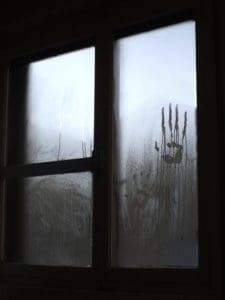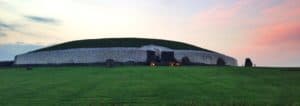The Unresolved Case of Tomb KV55 and the Search for a Royal Identity
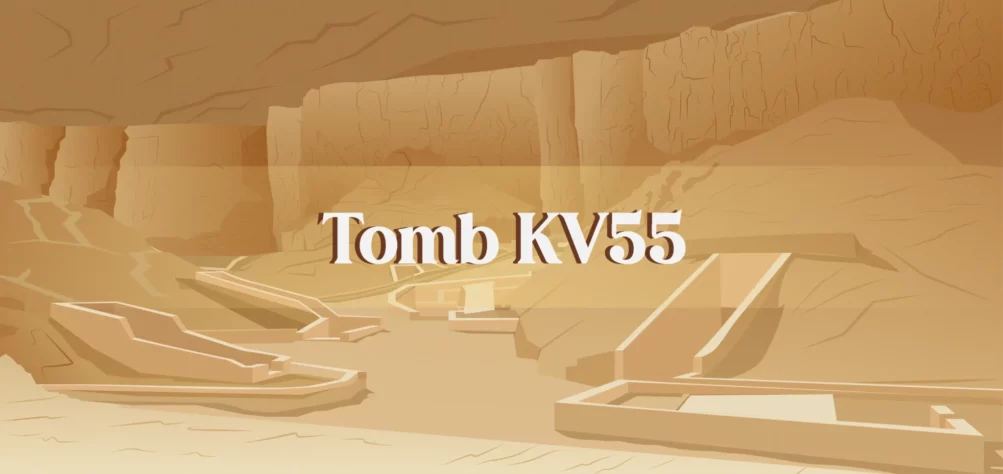
Updated On: February 23, 2024 by Noha Basiouny
In the sun-soaked deserts of Egypt, where the sands whisper tales of ancient pharaohs and dynasties, lies the Valley of the Kings—an archaeological treasure trove that continues to captivate the imaginations of historians and enthusiasts alike. Nestled among the imposing cliffs of this sacred necropolis is KV55, a tomb that has perplexed scholars for decades and sparked intense debates within the Egyptological community.
Ever since it was discovered, tomb KV55 immediately caught the attention of the world with its unique blend of mystery and historical significance. Unravelling the secrets concealed within this enigmatic burial site has proven to be a challenging and intricate puzzle, leaving researchers grappling with questions surrounding the identity of the occupant, the circumstances of the burial, and the broader implications for our understanding of ancient Egyptian history.
This article aims to shed light on the myriad theories, controversies, and revelations that surround KV55. So, take a step into the shadows, dear reader, and let us explore the tomb KV55, thread by dusty thread, until the forgotten pharaoh finds its voice once more.
Valley of the Kings
The Valley of the Kings, that renowned archaeological site, is situated on the Nile River‘s west bank, opposite to the ancient city of Thebes or modern-day Luxor in Egypt. In ancient Egyptian religious beliefs, the west bank was associated with the setting sun and the journey to the afterlife, which made the valley a symbolic and sacred location for burials.
The valley’s significance lies in its role as a necropolis, housing elaborate tombs cut into the rock for the Egyptian rulers and high-ranking officials who lived between 1550 BC and 1189 BC. The site was chosen because of its proximity to the capital city and its natural terrain, which provided a degree of protection and concealment for the tombs.
As of 2023, at least 66 tombs in the valley have been identified; many of which belong to famous and powerful pharaohs, including Seti I, Ramesses II, the former’s son, Ramesses III, Thutmose II, and Tutankhamun. The reigns of all of those and many others collectively made the New Kingdom, the greatest period of Egyptian civilisation. They had also left a spectacular archaeological legacy that has made them remembered for eternity.
The early excavation of the Valley of the Kings was probably initiated by Napoleon’s expedition in Egypt in the very end of the 18th century. The multi-volume epic Description de l’Égypte ignited Egyptomania in Europe, and soon after, more focused excavation and extensive exploration of the Valley of the Kings began.
With every new discovery, more and more secrets unfolded, providing a better understanding of one of the greatest civilisations on the face of the Earth.
One of the most notable discoveries was the tomb of Pharaoh Tutankhamun, which Howard Carter discovered in 1922. This archaeological find quickly gathered significant international attention as the burial chamber was virtually untouched and contained a wealth of well-preserved artefacts.
On the other hand, one of the most mysterious tombs that has ever been excavated so far is KV55, and we are only using its number here for its occupant has not yet been confirmed, and this is pretty much what we are investigating in this article.
KV55
KV55 is a tomb located in the central area of the Valley of the Kings in Egypt, near other notable tombs like those of Ramesses II, KV7, and Tutankhamun, KV62. It was discovered in early 1907 by English Egyptologist Edward R. Ayrton, who was excavating in the valley for American lawyer and businessman Theodore M. Davis.
The entrance of the tomb comprises a flight of 20 stairs cut into the valley bedrock and leading to a sloping corridor, which itself leads to the one and only burial chamber—27 metres long—that makes up the tomb. Attached to the chamber through a wall window is an even smaller ante-chamber.
When the tomb was unearthed, the outer door was blocked by two consecutive limestone walls. The second, built after the first was destroyed, was plastered and stamped with the seal of the Royal Necropolis, which gives a clue that it was added in antiquity.
The stairwell beyond the walls was filled with rubble, which, after adequate testing, was found to date back to the same time the tomb was first used for burial.
By the time of the tomb’s discovery, it was clear that the rubble had found its way to the burial chamber, with stains on its walls that clearly indicate water had entered it long ago.
Once he entered the tomb, Ayrton was welcomed by a series of contradicting contents that quickly associated the tomb with a variety of mysteries and historical puzzles that earned it significant attention and have not been rightfully untangled to date.
Mystery
So, what exactly was in KV55 that made it so controversial and mysterious?
The tombs in the Valley of the Kings are known for their intricate wall paintings, hieroglyphs, and inscriptions that depicted the deceased in various forms and in scenes from their earthly lives showing their accomplishments and offerings, as well as others with the gods.
These were not only to emphasise the importance of maintaining a connection to the living world and serve as a reference to whom the tomb belongs to, but they also guided the deceased in the afterlife, providing essential information, prayers, and spells to ensure a successful journey to the realm of the dead.
Ancient Egyptians were also known to fill their tombs with treasures and artefacts to ensure a prosperous afterlife for the deceased. These items were believed to provide wealth, sustenance, and spiritual support in the journey beyond, maintaining the individual’s identity, status, and well-being in the afterworld.
While most, if not all, the already discovered tombs in the valley complied with these funerary traditions, KV55 did not. In fact, it was the complete opposite.
When Ayrton cleared the stairway from the rubble and was finally able to descend to the sacred realm of a yet-to-be-known royal, it caught his attention that neither the corridor nor the burial chamber of KV55, though plastered, had any decorations. There were no paintings, hieroglyphics, reliefs, or inscriptions, just complete nothingness coming from the afterworld to leave the man, his team, and the entire humanity eternally puzzled.
Yet, this was not the archaeologist’s first shock.
Inside the bare burial chamber, there was a single wooden gilded coffin. The lower three-fourths of the coffin’s mask were ripped off, leaving only the right eye and half the forehead. In addition, the oval ring on the coffin, called the cartouche, that normally contained the name of the deceased was also removed as if to wipe out the identity of the mummy inside the coffin.
The mummy inside the coffin was rather a badly damaged skeleton that did not quite seem to have undergone the same mummification as the other mummies discovered in the valley.
Speaking of mummification, ancient Egyptians used to leave canopic jars in the tombs to store and preserve the organs of the deceased, such as the liver, lungs, stomach, and intestines, that were taken out during the mummification process.
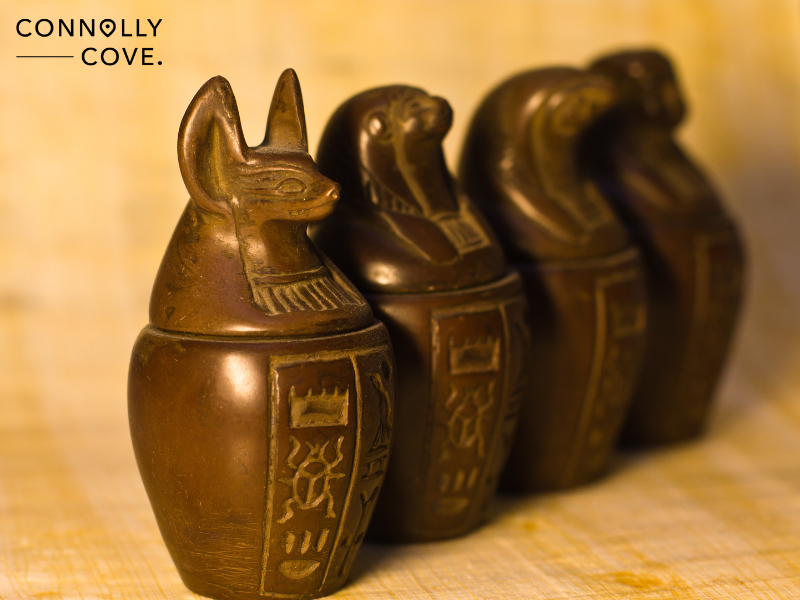
In the case of KV55, it was not just that the four canopic jars Ayrton found beside the coffin were empty or that their stoppers had heads depicting a queen, but also the inscriptions that usually gave reference to whom the jars belonged were also hacked out, adding another layer to the mystery to the already mysterious tomb.
The fourth component that also puzzled everyone who ever tried to resolve the case of KV55 was multiple panels of a gilded yet dismantled shrine with inscriptions on its outer side mentioning Queen Tiye, wife of Pharaoh Amenhotep III, who ruled during the 18th Dynasty. There were other names carved on the shrine, but these were again wiped off and replaced by those of Amenhotep III.
Interestingly, seal impressions bearing the name of Tutankhamun were found on the panels as well.
Wait! It does not stop here. Four magical mud bricks were also found in the tomb. These normally included spells to ward off evil spirits and demons, safeguarding the deceased in the afterlife. Two of these bricks had their inscriptions, yes, you guessed it, wiped off, while the other two had mentions of Akhenaten, Queen Tiye and Pharaoh Amenhotep III’s son.
Other contents that were found in the burial chamber included glass and pottery containers and different pieces of jewellery that had inscriptions of Queen Tiye on them.
All of those seemingly unrelated components have made it so hard to determine the owner of the tomb or the occupant of the coffin. Why were there no paintings on the walls? Why were the inscriptions on the coffin, canopic jars, and gilded shrines wiped out? Who was that whose identity was concealed?
Well, this is what archaeologists and Egyptologists worked so desperately hard to reveal, yet it is not known whether their work helped solve the case or made it even more puzzling. So, let’s look into some of the interpretations that were made about the tomb after a century’s worth of examinations and studies.
Interpretation
The thought that first came to mind as to whom the tomb belonged was that it was of Queen Tiye. This was supported not only by the panels of the queen’s shrine that were found in the burial chamber but also by factual research that revealed that the wooden coffin was originally made for a female royal, not a male.
This was evident from the inscriptions on the coffin that were clearly altered to describe a male not a female. However, some of the original hieroglyphics were still there, written in feminine pronouns, indicating that whoever the coffin was originally made for was a female.
It was even revealed that the fake beard and uraeus on the coffin’s mask were added later. This, along with the female heads on the canopic jar stoppers, further supported the theory that the coffin was initially intended for a female member of the royal family, Queen Tiye probably.
If these little discoverers indicated anything, it would be that using this coffin for the burial of this very mummy was not planned and most probably happened in a rush.
It also means that the mummy was of a male.
Although early examinations of the skeleton inside the coffin concluded that it belonged to Queen Tiye, further examinations said that it was rather of a male who died in his 20s.
In 2010, a team of Egyptian Egyptologists led by Zahi Hawas reopened the case and ran a series of examinations on the skeleton to find out that the male it used to be one day died somewhere between his mid-30s and early 40s, not in his 20s.
DNA testing was also used to clear the identity of the skeleton and revealed that it was of the son of Amenhotep III and the father of Tutankhamun, whose mummies are currently found in The National Museum of Egyptian Civilisation and Tomb KV62 in the Valley of the Kings respectively.
Now, Amenhotep III did have many children, but only two are associated with Tutankhamun: Akhenaten and Smenkhare. While Akhenaten was a confirmed son of Amenhotep III, Smenkhkare was rather theorised and unfortunately, not much is known about him other than the fact that he succeeded Akhenaten and stayed in power for just a year.
If he truly were Akhenaten’s brother, Smenkhkare would then be Tutankhamun’s uncle. If he were Akhenaten’s son, as some speculations claim, he would be Tutankhamun’s older brother in that case.
However, since Smenkhkare’s origins and general life are still unknown compared to Akhenaten, who is known pretty much on an international level thanks to the radical changes he brought to the society, the assumption that the skeleton belonged Smenkhkare can be easily ditched, leaving Akhenaten to make its true identity.
Akhenaten
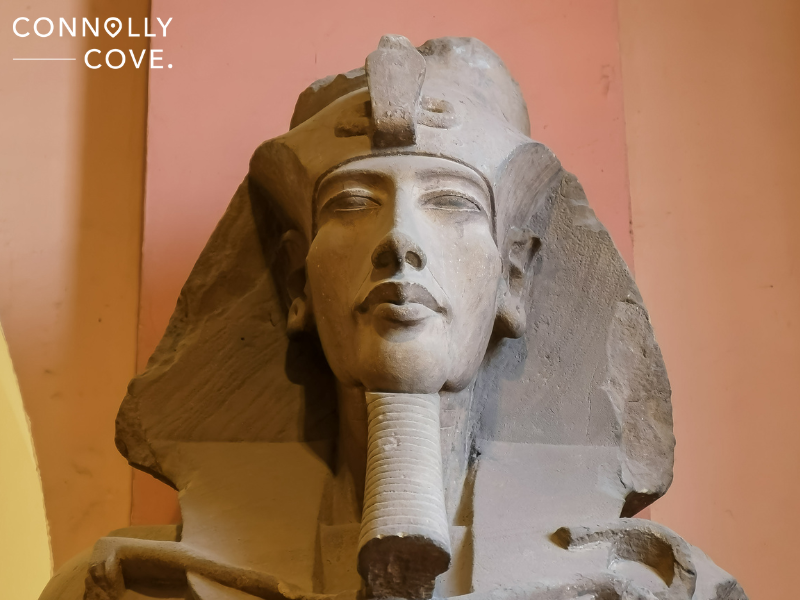
Akhenaten was pretty much one of the most controversial pharaohs. He was considered a preacher by those who followed him and a heretic by the Amun priests, whom he outraged.
Originally named Amenhotep IV, Akhenaten reigned during the 18th Dynasty of the New Kingdom between 1353 and 1336 BC. He is particularly well-known for his religious reforms, which included ditching traditional Egyptian polytheism, promoting the worship of the one and only god, Aten, whom he depicted as the sun’s disk, Aten, and establishing a monotheistic cult centred around him.
To strengthen this new cult of Aten, Akhenaten closed all the temples that were primarily built for the worship of Amun-Ra, the chief deity, and the one under whom at least 1,400 other deities functioned.
The temples were controlled by the Amun priests, who enjoyed substantial power and dominance over land and large funds from the government. So it makes sense that they went bananas when they woke up that ominous morning to find out they were sacked.
Yet, Akhenaten did not stop there. A few years later, he decided to abandon Thebes altogether and establish a brand new capital far away, and he did. The new capital city was called Akhetaten and was over 300 kilometres north of Thebes.
Akhenaten moved to Akhetaten with his family and followers and lived a peaceful life where everything, including art and how the pharaoh was depicted, was quite unlike what had been known for centuries.
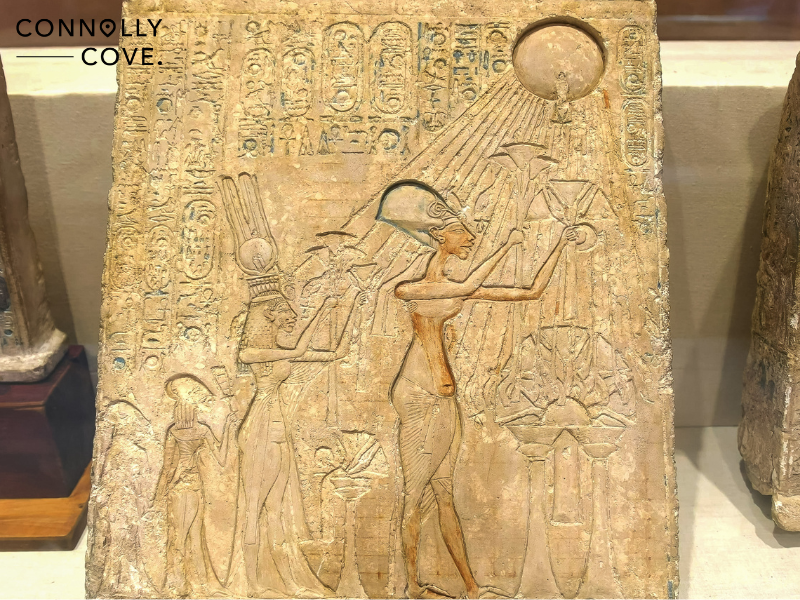
Yet, like everything else in the cosmos, the good days came to an end, and the religious changes Akhenaten introduced were only meant to live just as long as he did. After his death, the cult of Amun restored its dominance, and the priests reclaimed their grip over the country. Soon enough, Akhetaten was abandoned, traditional polytheistic worship was restored, and Thebes became the glorious capital of Egypt once again.
Collecting the Puzzle Pieces
Akhenaten had already built a tomb for himself in Akhetaten, but this was found empty, and neither the pharaoh’s mummy nor that of his wife Nefertiti were found in Amarna. Were they destroyed or moved elsewhere?
Well, it may make more sense for Akhenaten’s mummy to have been brought back to Thebes during the short reign of his son Tutankhamun after everything fell back into place. The fact that the skeleton was kept in a coffin that was not intended for Akhenaten from the beginning may imply that this reburial action was done quickly and without planning.
However, let’s not forget that, for the priests, Akentaten was still Akhenaten, a heretic, and even if they somewhat approved his reburial in their city, they were not to allow his legacy to linger on. So, they aimed to wipe out everything that was ever related to him. They wanted no mention of Akhenaten whatsoever, neither at the time nor in the future.
This may pretty much explain why the gilded mask and the cartouche on the wooden coffin were removed or why the tomb did not have any paintings or inscriptions. Perhaps because of that, too, the entrance to the tomb was filled with rubble and blocked by two walls.
As it turned out, no one was welcomed there, in KV55.
Conclusion
KV55 remains a captivating enigma, a testament to the enduring allure of ancient Egypt, with its mysteries beckoning the curious to delve deeper into the annals of history. It is a tomb that speaks in silence, its bare walls echoing with unanswered questions. But for Egyptologists, it is more than just a puzzle; it is a portal to a forgotten time, a chance to piece together the fragmented story of a pharaoh who defied both tradition and death.
As research continues and new technologies emerge, more secrets of KV55 may yet be unlocked. Until then, this unassuming tomb will continue to stand as a reminder that history is not always written in grand inscriptions but sometimes whispered in the dust of forgotten chambers.


